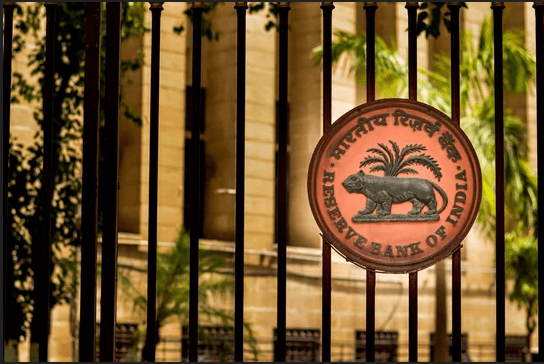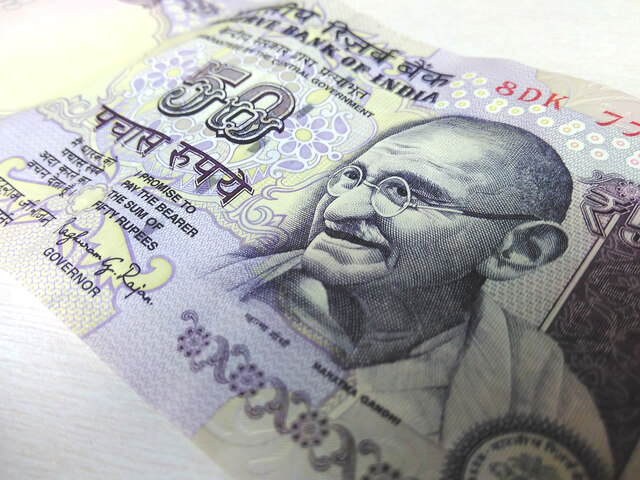How does RBI control the rupee to cross 80 ?- Majors are taken to decrease rupee depreciation
The Indian rupee has turned into a super senior citizen last month when it crossed the 80-level mark recently. Most people have their remarks about the recent fall – for some, this depreciation of the rupee against the dollar is good, whereas others also believe that the fall is too steep.
If you look at the rupee-dollar equation of the last year, the rupee has depreciated nearly 10% against the dollar since the start of the year.
Thus there is no other choice for the Reserve Bank of India to prevent the rupee depreciation.
But how can RBI do it?
Let’s dive into the article below to find out.
But before finding out the answer to this question, let us understand first why the price of the rupee is falling.

Why is the price of the rupee falling?
Following are some of the reasons for the falling price of the rupee.
Reason 1 – continuous interest rate hike in the US
An indirect but primary reason for the falling rupee against the dollar is the increasing interest rate of the Federal Reserve in the US.
Investors tend to move to investment options where the interest rate is high.
Let’s assume they have invested in the equity market because the fixed deposit rates were low. They could make good returns on your equity investment, but on the other hand, the fixed deposit rates are increasing. So they tend to withdraw their money from equity and invest in fixed deposits.
It is majorly contributing to the falling price of the rupee.
Reason 2- The rising dollar index
Another important reason for the falling price of the rupee is the rising dollar index. If the index of the dollar rises, the value of other currencies gradually falls.
Reason 3 – Crude Oil prices
Another prime reason for the depreciation of the rupee price is the increasing crude oil prices which remained unnoticeable.
As you know, the price of crude oil has increased sharply in the last year or so. India has a great oil demand and it imports 86% of its oil. It imports millions of barrels in a day and does thousand of dollars of crude oil transactions in dollars, not in rupee.
So the equation is quite simple – when the prices of this crude oil go up, we need to purchase more dollars to buy oil by selling the rupee.
Thus the US dollar is becoming stronger, and the value of the rupee is depreciating. The same thing has happened recently and caused the depreciation of the rupee.

How RBI is defending against rupee depreciation?
At such a crucial period, the actions of RBI are crucial and imperative. Have a look at below points how RBI defends the Indian currency:
Decrease speculation Currency trading
Decrease speculation currency trading has done when the currency of one country is expressed in terms of another. It is a highly volatile and speculative process.
Any negative news spreading in the market can affect the valuation of a currency and falls out abundantly. This is the basic primary rule of forex trading.
As RBI is trying to attack the depreciation of the rupee from its root, the reduced speculation is making it difficult.
Limit borrowing
Limit borrowing is another measure taken by RBI if there is any kind of shortage of liquidity in the market. In the process, banks can borrow from the RBI to fund this deficit.
The RBI has now made this borrowing money costlier by capping the borrowing of funds by banks as a part of repurchase agreements to Rs 75,000 crore. This is referred to as the Liquidity Adjustment Facility or LAF.
When these banks a look at market borrowings for funds, at the same time, the yields drop, attracting more buyers, that includes foreign institutions.

ECBs limit enhancement
Under the automatic ECB route and previous RBI rule, corporate and other valuable entities are allowed to raise foreign currency loans within an overall limit of $750 million.
RBI has now decided recently to increase the limit under the automatic route from $750 million or its equivalent per financial year to $1.5 billion.
Expansion of scope for foreign currency lending by banks
In recent days, the lending of foreign currency by category -I authorized dealers, which are mostly generated from domestic and foreign banks, are allowed to undertake overseas foreign currency borrowing up to an extended limit of 100 percent of their Tier-1 capital or $10 million, which is higher than other.
However, there is a certain kind of restriction on the end-use of these funds to export finance only.
The central bank or RBI has now decided that these banks can now utilize these funds to lend foreign currency required by their entities for a wider set of end-use purposes, irrespective of all the negative list set out for external commercial borrowings (ECBs).
FPI Investment in Debt
Another major taken of RBI is that it has further relaxed investments by FPIs in different government securities and corporate bonds.
In the G-sec segment of RBI, it has also increased the choices for these FPIs from 5-year, 10-year, and 30-year papers to all new issuances of G-Secs prolonged period of 7-year and 14-year tenors.
It has also initiated a limit of 30 percent investment in short-term G-sec paper and other corporate bonds of less than one year.
Apart from that, FPIs are now permitted to invest their funds only in corporate debt instruments with a residual maturity of at least one year.
It has also been decided that FPIs will be provided with a limited window for a certain period of time during which they can invest their money in corporate money market instruments via commercial paper and non-convertible debentures with an original maturity year of up to one year.

Interest Rates on FCNR(B) and NRE Deposits
Recently, RBI has allowed banks to raise their fresh Foreign Currency Non-Resident Bank [FCNR(B)] and NRE deposits temporarily without making any reference to the extant regulations on interest rates. This relaxation will be available for the period up to some duration.
It helps to decrease the depreciation of the rupee against the dollar.
Conclusion
As you read this article, you might come up with an idea that why the price of the rupee is depreciating against dollars and what measures RBI is taking to prevent that.
*image source from Google
Check More News on World Economy:



